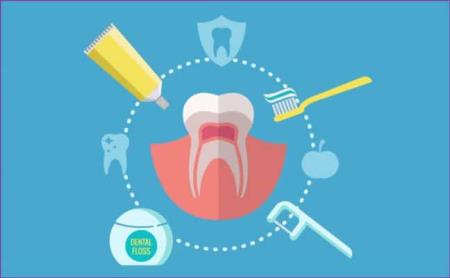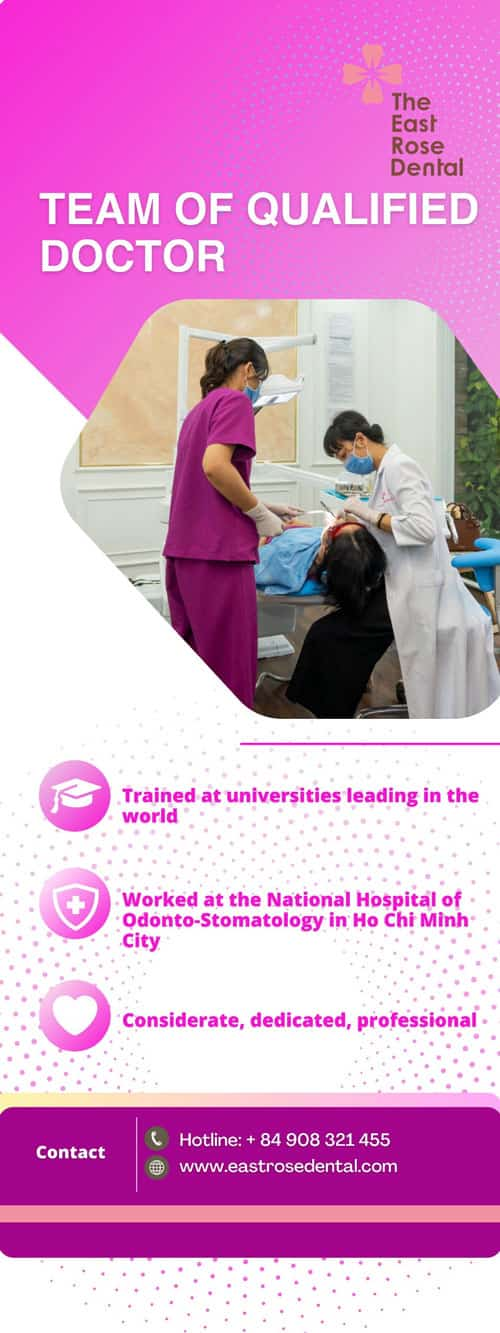Build a good brushing teeth habit
Oral hygiene is an important part of our everyday life. Taking care of your teeth has become a habit since you were just a little kid. However, are you sure you’re doing it the right way?
Benefits of Taking Care of Your Teeth Properly
Practicing proper oral hygiene daily helps you keep your teeth healthy, preventing oral diseases such as gum inflammation, periodontitis, cavities which are caused by bacteria-ridden plaque.
Plaque is a sticky layer of bacteria, bits of food and other organic matter that forms on your teeth. The bacteria in plaque metabolize these organic compounds, producing acids that cause cavities.
Plaque also leads to periodontal (gum) disease, gum inflammation, and periodontitis This can become a serious infection. It can damage bone and destroy the tissues around your teeth.
The best defense is to remove plaque before it has a chance to build up and produce acids, causing problems for your teeth and gums.

Building good brushing habits
Most of us learned to brush our teeth when we were children. We have stuck with the same brushing technique into adulthood. Unfortunately, in reality, many of us learned how to brush the wrong way. Even if you are aware of it, it’s hard to change that lifelong habit.
There are different ways to brush correctly. See our animated instructions for some ideas. The modified Bass technique (below) is among the most popular for adults. Parents should supervise their children’s brushing until age 9 or 10. Here are a few general pointers so you can get the best out of brushing
1.Brush at least twice a day
One of the best times you should brush your teeth is just before you go to bed. When you sleep, your mouth gets drier. This makes it easier for acids from bacteria to attack your teeth. Also try to brush in the morning, either before or after breakfast. After breakfast is better as it gets rid o not only the plaque that built up overnight but also food particles left from your breakfast.
2. Brush no more than three times a day
Brushing after lunch and afternoon tea will help your teeth stay clean. But brushing too often can damage your gums.
3. Brush gently
Brushing too hard can damage your gums. It can cause gum recession. Plaque attaches to teeth like food sticks to a spoon. It can’t be totally removed by rinsing, but a light brushing will do the trick.
However, if plaque isn’t removed immediately, it will harden into calculus (tartar). By then, brushing no longer works and you will have to visit a dentist to get it professionally removed. If you think it’s too hard to be gentle with brushing, hold your toothbrush the same way you hold a pen. This encourages a lighter stroke.
4. Brush for at least two minutes
Two minutes is the minimum time you need to clean all of your teeth. Try to relax to a song while brushing if you think the repeated brushing strokes bore you out.
5. Have a standard routine for brushing
Try to brush your teeth in the same order every day. This can help you cover every area of your mouth. For example, you can brush the outer sides of your teeth from left to right across the top, then move to the inside and brush right to left. Then brush your chewing surfaces, too, from left to right, etc.
6. Always use a toothbrush with soft bristle that is certified by the Ministry of Health
The harder the brush, the greater the risk of harming your gums. Choosing certified toothbrushes also guarantee that they are good and safe for use.
7. Change your toothbrush regularly
Throw away your old toothbrush after three months or when the bristles start to flare to avoid gum damages.
8. Use an electric toothbrush. Electric is fine, but not always necessary for oral care
Electric or power-assisted toothbrushes are a fine alternative to manual brushes. They are especially useful for people who don’t always use proper brushing techniques. They also are a good choice for people with physical limitations that make brushing difficult.
How to choose toothpaste?
Toothpaste not only cleans teeth but also has special ingredients that help prevent cavities, control plaque, whiten teeth, take care of gums, ... Most toothpaste contains fluoride Fluoride has been shown to prevent tooth decay as well as prevent small cavities or stop tooth decay.
- Children's toothpaste: Children's teeth are very sensitive, so children toothpaste will have less fluoride and tooth abrasion than adults.
- Toothpaste for smokers: Smoking is one of the causes that stain teeth. Toothpaste reserved for these individuals usually has bleaching ingredients to make teeth brighter.
- Whitening toothpaste: Even if you do not smoke, the enamel will still dent over time, so bleaching toothpaste contains active bleaching ingredients to contribute to the removal of stained teeth.
- Toothpaste for sensitive teeth: For those who have sensitive teeth, this toothpaste contains potassium nitrate - an active ingredient that helps reduce the unpleasant aches and pains caused by sensitive teeth.
- Herbal toothpaste: This is a benign option for those who have sensitive teeth and love natural materials. However, sometimes the cream does not contain fluoride - an ingredient recommended by dentists to protect tooth enamel and keep teeth strong.
To be able to whiten areas of dark teeth in severe condition, go to the dentist for more advice on teeth whitening methods.
Certain ingredients in toothpaste can cause irritation of the teeth, cheeks or lips. If your teeth are sensitive or your mouth is irritated after brushing, try changing toothpaste. If the problem continues, consult your dentist.
How to properly clean teeth?
Even toothbrushes sometimes can't get their food between them, so you'll need to use the following tools:
Dental floss
Many people never floss. However, flossing is essential for healthy gums. Here are a few notes when flossing:
- Floss once a day: Most dentists recommend flossing at least once a day. You can use more times if food sticks to your teeth.
- Don't save floss: Use just enough to clean both sides of each tooth. Some experts think that reusing floss sections can transfer bacteria to other teeth.
- Choose the right type of floss: There are many types of floss: with and without wax, with flavor or odorless, etc. For example: Wax will help floss work better for people with tighten teeth.
Water toothpick machine
This is the form of a water brush. This type of product is often not used to remove plaque but rather to remove food and debris in between teeth. In addition, toothpicks can be used to deliver medicine to hard-to-find areas of the oral cavity.
Interdental brush
As the name implies, this is a special brush with a brush tip designed like a stick small enough to penetrate between teeth and clean to the root. Interdental brushes are also used for those who are braces to be able to clean food stuck on braces.
Mouthwash
Mouthwash containing fluoride helps kill bacteria in the oral cavity, brings comfort and fresh breath. Some mouthwashes are designed to soften plaque before brushing.
Also, many types of mouthwash contain high amounts of alcohol. Therefore, you need to avoid drinking alcohol when using them. Please read the ingredient label carefully before using any mouthwash. In some cases, your dentist may recommend a stronger or antibacterial mouthwash for you.
Services
Working Time
- Monday - Friday: 08:00 - 19:00
- Saturday: 08:00 - 18:00
- Sunday closed
Contact Info
- Hotline 1: (+84) 908 321 455
- Hotline 2: (+84) 931 857 885
- Mobile: (+84) 8 3925 8778
- Phone: (+84)2 838 258 778
- info@dentalrose.net
- rosedentalclinicvn@gmail.com
 English
English  Tiếng Việt
Tiếng Việt

